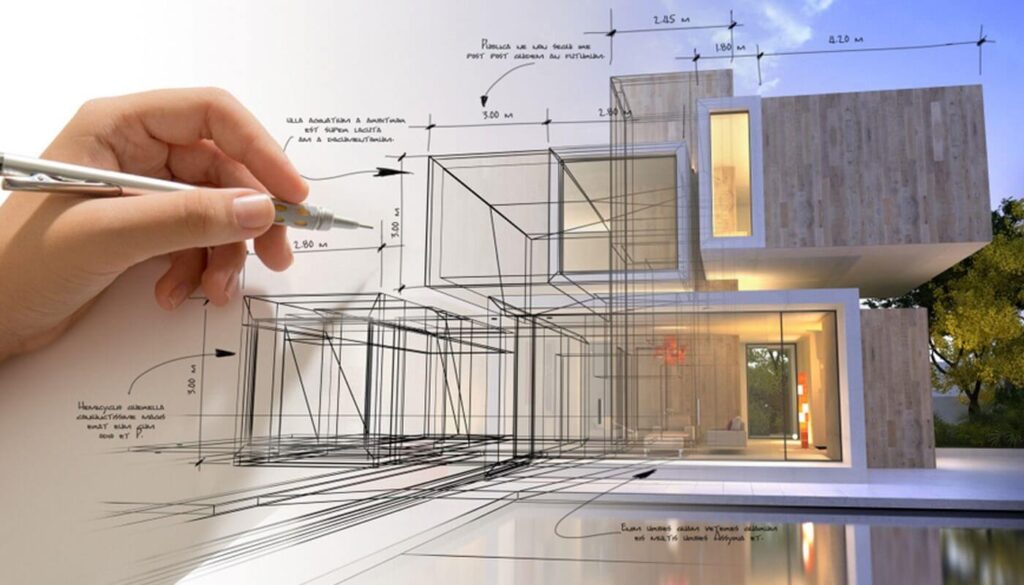The Creative Process Behind Successful Projects from CDA Architects
The Creative Process Behind Successful Projects from CDA Architects
Blog Article
The Effect of Technological Advancements on the Layout Practices of Contemporary Architects
The rapid advancement of technical tools has actually dramatically improved the design landscape for modern architects, promoting extraordinary levels of advancement and sustainability. Checking out these dynamics discloses a nuanced interplay in between innovation and typical layout methodologies, prompting a more detailed assessment of what the future holds for architectural techniques.
Development of Architectural Tools
Exactly how have architectural devices transformed the style and building and construction procedures over the centuries? The evolution of architectural devices has significantly influenced the efficiency, precision, and creative thinking of style and construction.
With the advent of the Renaissance, the intro of the compass and the protractor noted an essential shift. These devices made it possible for engineers to attain better precision in their layouts, assisting in the emergence of more detailed and in proportion buildings. The Industrial Change further changed building technique with the intro of mechanized devices and materials, permitting bigger and much more ambitious projects.
In the 20th century, the growth of computer-aided style (CAD) software changed the landscape when again, supplying architects with unprecedented abilities in modeling and visualization. Today, progressed devices such as Building Details Modeling (BIM) and parametric style software program proceed to push the limits of building innovation, making it possible for a much more incorporated approach to design and construction procedures.
Enhanced Collaboration in Design
As technology proceeds to progress, boosted partnership in style has actually ended up being a foundation of modern architectural method. The combination of electronic tools such as Structure Information Modeling (BIM), cloud-based platforms, and progressed visualization software program has actually changed the means architects, designers, and stakeholders engage throughout the layout procedure. These devices assist in real-time communication, permitting teams to share concepts, adjustments, and comments quickly, regardless of geographical area.

In addition, interdisciplinary partnership has been structured via these technical developments, making it possible for engineers to function extra carefully with various other professionals, such as city organizers and ecological consultants. The result is a more cohesive strategy to develop that considers numerous viewpoints and proficiency. Eventually, enhanced partnership in design is not just a pattern; it is essential for developing ingenious, practical, and aesthetically pleasing design in a progressively complicated world.
Sustainability Via Innovation
Sustainability in architecture has increasingly come to be intertwined with technological advancement, driving the market toward ecologically liable techniques - cda architects. Contemporary architects are leveraging innovative modern technologies to minimize environmental impact while enhancing the efficiency of structures. One popular instance is the use of Building Info Modeling (BIM), which enables for exact preparation and source allowance, reducing waste throughout building and construction and promoting energy efficiency throughout a other building's lifecycle
Additionally, wise read products and energy-efficient systems are being integrated into styles to maximize resource usage. Technologies such as solar batteries and environment-friendly roof harness renewable resource resources, contributing to minimized carbon impacts. In addition, the application of man-made intelligence in style procedures allows architects to simulate and examine energy usage, assisting choices toward more lasting results.
The combination of lasting technologies not only straightens with worldwide environmental goals however likewise satisfies a boosting demand from customers for eco-friendly options. As designers embrace these advancements, the focus changes towards producing spaces that are not just aesthetically pleasing but also functionally sustainable, therefore redefining the requirements of contemporary design. This way, modern technology acts as a catalyst for sustainability, enabling engineers to create structures that respect and improve the native environment.
Obstacles in Application
While technical advancements in design hold great pledge for improving sustainability, their implementation commonly comes across substantial obstacles - cda architects. One main barrier is the steep discovering curve connected with brand-new innovations. Architects and construction specialists might need substantial training to successfully make use of sophisticated software click to read program and tools, which can delay task timelines and enhance prices
Additionally, the assimilation of arising technologies, such as Building Info Modeling (BIM) and lasting materials, typically demands collaboration across multidisciplinary teams. This partnership can be impeded by distinctions in knowledge, operations, and interaction designs, leading to prospective problems and ineffectiveness.
Financial constraints better make complex the fostering of ingenious innovations. Several architectural companies, particularly smaller ones, may do not have the resources to invest in cutting-edge devices, restricting their ability to take on larger firms that can pay for such investments.
Moreover, governing structures and building regulations might not maintain pace with technological innovations, developing obscurity and possible conformity problems. This difficulty can discourage designers from fully welcoming new technologies, as the danger of non-compliance might exceed the benefits. For that reason, dealing with these execution obstacles is important for the effective combination of technological innovations in contemporary building methods.
Future Trends in Architecture
The challenges associated with the application of new technologies in style have prompted a reevaluation of future fads within the sector. As architects navigate problems such as sustainability, urbanization, and social equity, they are significantly adopting ingenious innovations to boost style efficiency and environmental performance.
One famous fad is the assimilation of expert system (AI) in the layout procedure. AI devices can assess vast datasets to inform design decisions, enhancing both creative thinking and capability. Likewise, Building Information Modeling (BIM) proceeds to evolve, enabling real-time cooperation among stakeholders and facilitating structured project monitoring.
Lasting layout practices are also acquiring energy, with engineers concentrating on adaptive reuse and regenerative design concepts that minimize resource usage and waste. The incorporation of wise materials and sustainable power sources will further boost the durability of structures despite environment adjustment.

Verdict
Technical innovations have actually significantly improved building style techniques, helping with boosted precision, cooperation, and sustainability. The combination of devices such as Building Information Modeling and parametric layout software program, together with artificial knowledge and smart products, encourages architects to address complex obstacles much more effectively.
Report this page